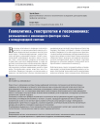Geopolitics, Geostrategy and Geoeconomics: Reflections on the Changing Force Factors in the International System
DOI: 10.33917/es-3.169.2020.30-41
Beginning the article with reminding some basic definitions of geopolitics, correlation of spatial and temporal components herein as well as the systemic nature of geopolitics as a science and the basis for a long-term political strategy, the author proceeds to the topic of relationship between geopolitics and geoeconomics, particularly significant in recent decades. He puts forward the idea that geoeconomics today is an increasingly dynamic and actively driving element in this dyad due to growing technological innovations, increasing competition and subsequent rising complexity of economic strategies of states. Based on well-known examples of economic and political outcomes of applying the state capitalism models or liberal economy, in particular, in the countries that have undergone a radical breakdown of their former economic systems (Russia is also briefly mentioned in this context), the author concludes that it is necessary to form a strategic state, able to develop a sustainable mechanism (including economic intelligence) for development and implementation of national geoeconomics. To support the provisions put forward in the article, the author, as an independent expert, gives a broad outline of geopolitical and geoeconomic shifts in the world in the coming decades.
References:
1. Luttwak E. From Geopolitics to Geoeconomics: Logic of Conflict, Grammar of Commerce. The National Interest, 1990, no 20, pp. 17–24.
2. Jean C. Manuale di geopolitica. Roma — Bari, Editori Laterza, 2003, p. 93.
3. Csurgai G. Geopolitical Analysis: A Multidimensional Approach to Analyze Power Rivalries in International Relations. Rome, Aracne Editrice, 2019.
4. Claval P. Géopolitique et Géostratégie. Paris, Nathan, 1994, p. 6.
5. Foucher M. Fronts et Frontières. Paris, Fayard, 1991, p. 37.
6. Gray C.S. Incapable Geography. In Gray , Colin S. & Sloan, Geoffrey (Eds), Geopolitics, Geography and Strategy. London, Frank CASS Publishers, 1999, p. 161.
7. Blackwill R.D., Harris J.M. War by Other Means, Geoeconomics and Statecraft. Cambridge: Harvard University Press, 2016, p. 20.
8. Luttwak E. From Geopolitics to Geoeconomics: Logic of Conflict, Grammar of Commerce. The National Interest, 1990, no 20.
9. Lorot P., ed. Introduction à la g éo économie. Paris, Economica, 1999, p. 15.
10. Blackwill R.D., Harris J.M. War by Other Means. Geoeconomics and Statecraft. Cambridge, Massachusetts: Council on Foreign Relations, The Belknap Press of Harvard University Press, 2016, p. 20.
11. Trade value. Bureau of Trade Statistics of Taiwan, available at: https://cus93.trade.gov.tw/FSCE030F/FSCE030F.
12. List F. National System of Political Economy. New York, Cosimo Classics, 2013.
13. Bolsinger E. The Foundation of Mercantile Realism Friedrich List and the Theory of International Political Economy. Paper presented at the University of Lincoln, 2004.
14. Miller E.S. Bankrupting the Enemy: The U.S. Financial Siege of Japan before Pearl Harbor. Annapolis, MD, United States Naval Institute Press, 2007.
15. Mello P.A. Democratic Peace Theory, in The SAGE Encyclopedia of War. Social Science Perspectives, Paul Joseph (Ed.), Sage Publications, 2017, available at: http://dx.doi.org/10.4135/9781483359878.n188.
16. Elman C. Introduction: History, Theory, and the Democratic Peace. The International History Review, 23:4, Routledge, 2001, available at: http://dx.doi.org/10.1080/07075332.2001.9640946.
17. Blackwill R.D., Harris J.M. War by Other Means. Geoeconomics and Statecarft. Council of Foreign Relations, The Belknap Press of Harvard University Press, Cambridge, Massachusetts, 2016.
18. Gaiser L. Economic Intelligence and World Governance. Reinventing States for a New World Order, Il Cerchio, Citta di Castello, 2016, pp. 177–186.
19. World military expenditure grows to .8 trillion in 2018. Stockholm International Peace Research Institute, available at: https://www.sipri.org/media/press-release/2019/world-military-expenditure-grows-18-trillion-2018.
20. SIPRI Yearbook: Armaments, Disarmament and International Security. Stockholm International Peace Research Institute, available at: https://www.sipri.org/yearbook.
21. China vs United States — A GDP Comparison. MGM Research. 2018, December, 21, available at: https://mgmresearch.com/china-vs-united-states-agdp-comparison/
22. Davidson P. China, India close gap with U.S. as world’s top economy. USA Today, 2019, January, 11, available at: https://eu.usatoday.com/story/money/2019/01/11/china-india-gain-us-worlds-top-economy/2551849002/
23. The Long View. How will the global economic order change by 2050? PWC, available at: https://www.pwc.com/gx/en/world-2050/assets/pwc-world-in2050-summary-report-feb-2017.pdf.
24. GLOBAL 2000. The World’s Largest Public Companies. Forbes, 2019, May, 15, available at: https://www.forbes.com/global2000/#7161a2a9335d.
25. United Nations, Department of Economic and Social Affairs, Population Division (2019). World Population Prospects 2019. Data Booklet (ST/ESA/SER.A/424).
26. A New Version of World Map Published. Institute of Geodesy and Geophysics Chinese Academy of Sciences, available at: http://english.whigg.cas.cn/ns/es/201312/t20131211_114311.html.
27. Spykman N.J. America’s Stragegy in World Politics, The United States and the Balance of Power. New York, Harcourt Brace and Co, 1942.
28. Khana P. The Future is Asian, Global Order in the 21st Century. London, Weidenfeld Nicolson, 2019, p. 321.
29. Lambert A. China’s Belt and Road Initiative in a New Era of Geoeconomic Rivalries. Conference Paper, GIGS (Geneva Institute of Geopolitical Studies) Summer Course “Geopolitics” 2019.
30. Kirsch H. (Ed.) La France en guerre économique. Plaidoyer pour un Etat stratége. Paris, Vuibert, 2008.
31. Harbulot Ch. La Machine de Guerre Economique. Paris, Economica, 1992.
32. Harbulot Ch. La Main invisible des puissances. Paris, Ellipses, 2007.
33. Harbulot Ch. Manuel d’intelligence économique. Paris, PUF, 2015.
34. Vogel E.F. The Four Little Dragons: The Spread of Industrialization in East Asia. Cambridge, MA, Harvard University Press, 1993.
35. Young-Iob Chung. South Korea in the Fast Lane: Economic Development and Capital Formation. Oxford University Press, Oxford, New York, 2007.
36. Csurgai G. “Geoeoconomic Strategies and Economic Intelligence” in Advances in Geoeconomics. London, New York, Ed. J.M. Munoz, Routledge, 2017.
37. Jean С., Savona P. Intelligence Economica. Rubettino, Soveria Mannelli, 2011, p. 21.
38. Pierucci F. Le piège am éricain. Paris, Editions JC Latt ès, 2019.



